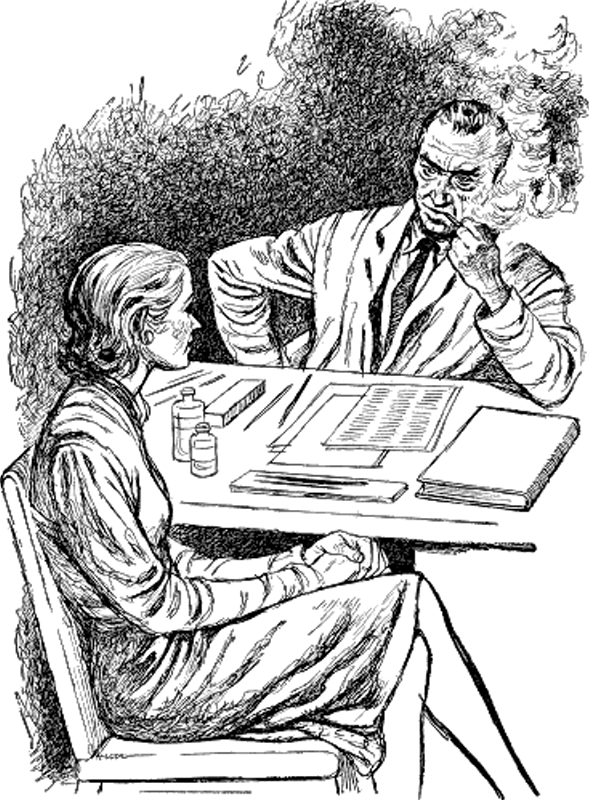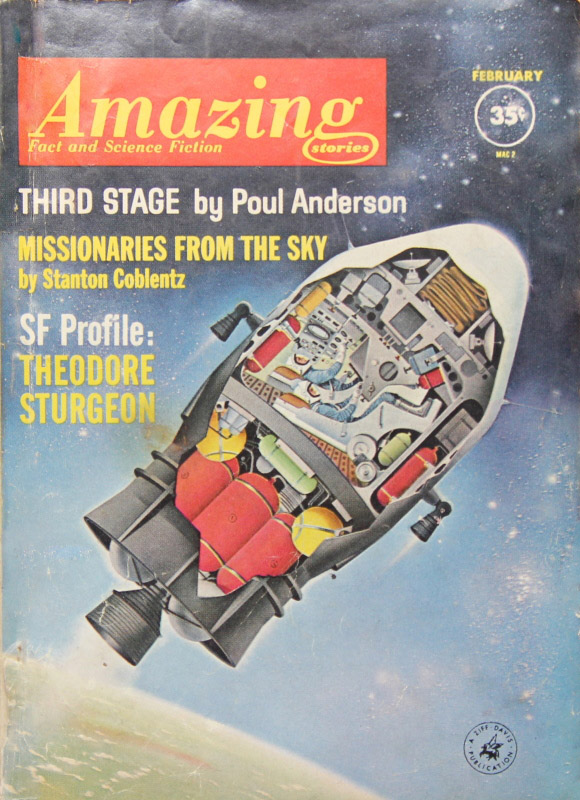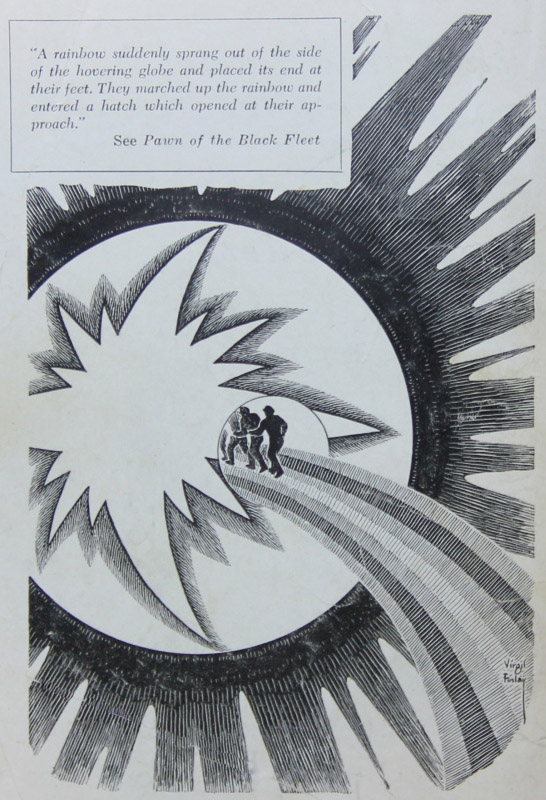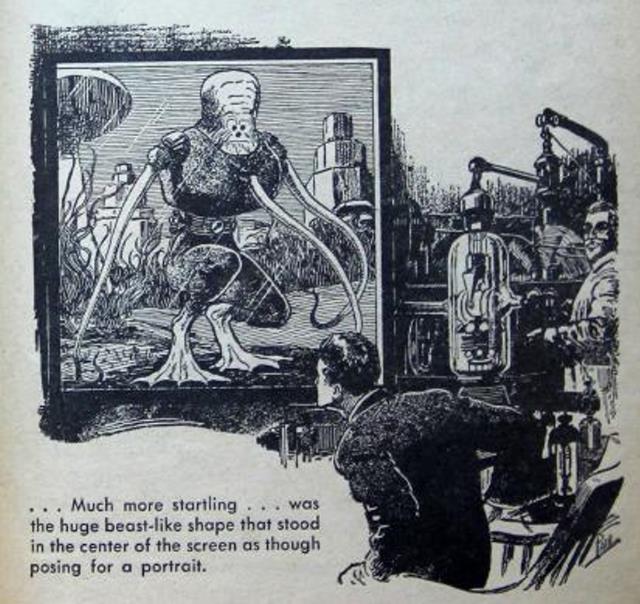
By Ashley R. Pollard
I mentioned last time I find December winter difficult. In January it snowed, which reminds me of the song Let it Snow! by Vaughn Monroe, though the cover version sung by Dean Martin may be more familiar to younger readers of Galactic Journey. So with the frightful weather outside I had a good reason to stay indoors and read, and thanks to the Traveller's influence I have laid hands on preview copy of Eric Frank Russell’s, The Great Explosion, soon to be available at the end of May / beginning of June in hardback from all good bookstores.

When I first came across Russell’s work I initially thought he was an American because of his easy use of colloquial American English in his writing. However, as we say over here, he’s as British as they come. We not only mix in the same science fiction circle, but also share an interest in the works of paranormalist Charles Fort, which I may be assuming (incorrectly?) readers of the Galactic Journey know about. Russel also writes under various pseudonyms including Webster Craig, Duncan H. Munro, Niall Wilde (also spelled Naille Wilde), and Maurice G. Hugi.
I can’t remember the first story I read by him, but my guess is probably his Hugo award-winning short story Allamagoosa, which appeared in the May 1955 issue of Astounding Science Fiction. If you’ve not read it I suggest it is well worth your time to find a copy and do so, despite it being or perhaps I should say because it’s a shaggy dog story. However, my favourite two books by Russell are his 1957 novel, Wasp, and Next of Kin from 1959. I will mention that Next of Kin, because it has a bearing on his latest novel, first saw print in Astounding as a novella titled Plus X, and there was also a slightly expanded version of the novella published by ACE Books as The Space Wilies before the definitive Next of Kin was published.

Eric Frank Russell’s new novel is an expansion of his novella And Then There Were None that appeared in the June 1951 issue of Astounding. However, despite the minor disappointment of this story being an expansion of a previous work, it manages to expand the original work in a way that adds considerably to the context of the setting.
The story starts with a prologue describing the happenchance discovery of the Blieder Drive, a space-drive that takes mankind to the stars. This being Russell, there’s less manifest destiny and more an anarchic rush to either exploit or get rid of people. Terra, as a result, sees a large number of people leave because of the Blieder Drive, and the story proper begins 400 years later with the first voyage to reunite the lost worlds to form the Terran Empire.
For any other author this might be a chance to give the ship a suitable grand name, but Russell just refers to it throughout the novel as "the ship." Russell’s focus is on the foibles of the bureaucratic mindset behind the mission. The story is split between the relationship between the pompous diplomat, who is only ever referred to as "the Ambassador" or "his Excellency," the phlegmatic Captain Grayder, who is in command of the ship, and the punctilious Colonel Shelton, commander of the military detachment sent to protect the diplomatic staff.
Russell compares their behaviours with those of the people of the worlds the ship visits and contrasts them to the ordinary man aboard: in this case Sergeant Gleed and Tenth Engineer Harrison, who get assigned to various tasks assigned by their betters. This being an Eric Frank Russell story, the focus of each of the planetary visits is to satirize the beliefs of the great and good.
The first planetfall occurs on a planet where all Earth's prisoners were shipped to when the Blieder Drive made interstellar travel possible. Unlike, say, Australia, which is our real-world analog, our convicts have created a world where stealing is the norm, and where things we take for granted as decent and proper are laughed at for being foolish. The natives manage to get one over on the crew in their exchanges, played for comic effect, as what is being described is pretty horrible, but no worse than the lives our ancestors lived in feudal times. This part of the story is a set-up of the shape of things to come [This sounds a lot like Robert Sheckley's The Status Civilization (Ed.)]
The ship then makes its way to Hygeia, which is dominated by nudists who are health and fitness fanatics and who sneer at the fat and flabby Ambassador; they make the fittest member of the ship’s crew look feeble by comparison. Here Russell is able to poke fun at both sides: the Hygeians for their fastidious health habits and the Terran’s for their prudishness. The outcome of the diplomatic negotiations can probably be considered a draw, as neither side will ultimately get what they want.
The third planet visited, called Kassim, is the shortest part of the novel because it’s uninhabited and the colonists are assumed to have died from a disease. While this is all well and good, I thought Russell missed a chance to have a bit more science on show. There again that has never really been his forte, which brings us to the final and longest section of the novel (the part published back in 1951).
I unfortunately have not been able to lay my hands on a copy of And Then There Were None, so I cannot compare and contrast the two for changes made by Russell. For those of you who have not had the pleasure of reading the original, here is a chance to read and enjoy a fabulous story sending up the bureaucratic might of Terra by a bunch of the most philosophically inclined anarchic libertarians you could possibly imagine. Some of the conversations are what I would call psychological nuggets of pure gold pedantry that will bring tears of laughter to anyone’s eyes.
This is Russell at his best, lampooning social conventions and assumptions to make us question why we do what we do. My sole criticism would be that this only works here because the crew of the ship from Terra are nice people: as in decent human beings no matter how deluded their beliefs. Had the ship come from an authoritarian regime prepared to enforce control by whatever means necessary then the story wouldn’t have ended so well. There again the story would not be a humorous satire, but rather a dystopian tale of a man’s inhumanity to man. Of the two, I know which I would rather read.
Four stars.































